A window into the past 5 million years ago.
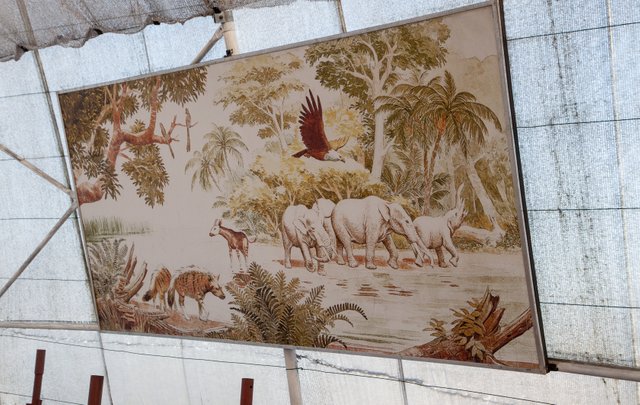
I was lucky enough to visit the Fossil Park at Langebaanweg near the town of Langebaan on the west coast of South Africa recently with the Venacular Architecs Society and we were privileged to be guided around by a friend and colleague who now is the manager of the complex.
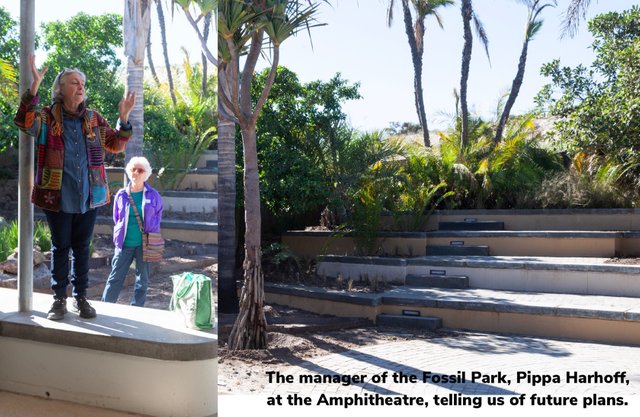
I have been familiar with the site since the early 1970’s when I spent a week there helping with the excavation of fossils. Now all these years later I was keen to see was how the huge sum of National Lottery Commissions money that they had received had been spent, and what the new facilities and interpretation center looked like. Boy, was I impressed.
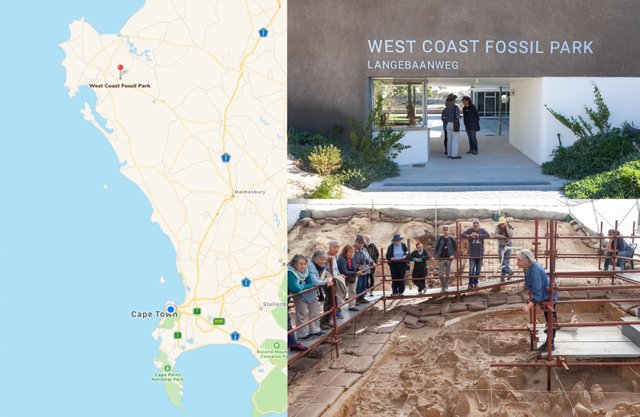
Major Upgrade
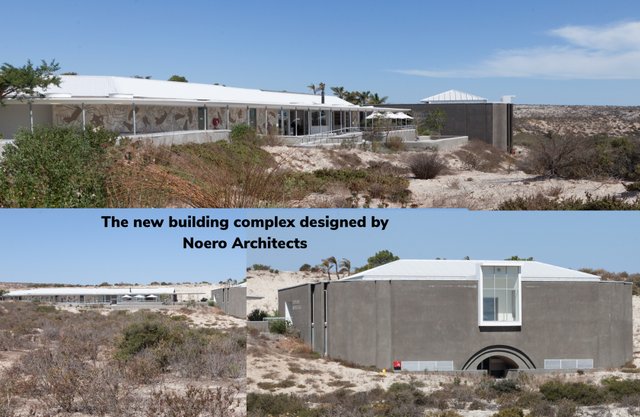
The money received paid for the planning and development of the new building, the artwork and exhibitions in the centre, an educational programme, transport and staff. The West Coast Fossil Park Board of Trustees commissioned Noero Architects to design the building. The project ongoing since 2009 was built in 2016 although the Fossil Park has existed since 1998 in the renovated old mine building.
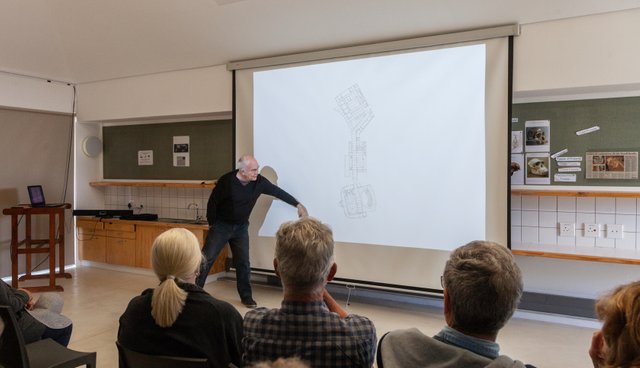
We were privileged to have the architect present and gave an informative talk on the project.
Article on how the lottery money was used
https://www.groundup.org.za/article/west-coast-fossil-park-lottery-success-story/
Vision of the Architects
“The key design element was the site and the way in which the buildings would be placed on the site. The marks left on the site by the previous mining operations were the starting point. The original site was damaged by mining operations – at the same time, the use of modern mining technology was responsible for the uncovering of the fossil bed and its treasures. This duality formed the basis on which our design strategy was developed.”
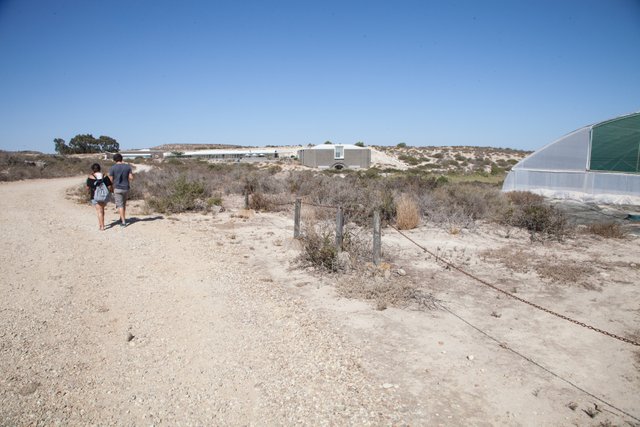
“The buildings are dug into a prominent man-made mound which comprised clean mined material. Due to the slope of the mound, the back of the buildings are dug into the slope and the front extends out beyond the line of the slope. Buildings and walkways face onto the dig site to the west.
The buildings are layered horizontally and vertically to emphasize the cutting into the site similar to the mining operations. Over time, the buildings will melt into the site and the landscape will grow up and over the walls of the buildings – the sharp distinction between building and landscape will become blurred and the line of the joining will not be a thin line but a thick blurred line between landscape and building. Our objective is to make a set of buildings on a very precious site where the site and the buildings sit in co-existence and where neither one nor the other dominates.”
https://www.noeroarchitects.com/project/west-coast-fossil-park/
Exhibitions in progress
The new building although open to the public at present will officially open sometime in September 2018. The exhibition hall and displays are currently under construction and not open to the public.
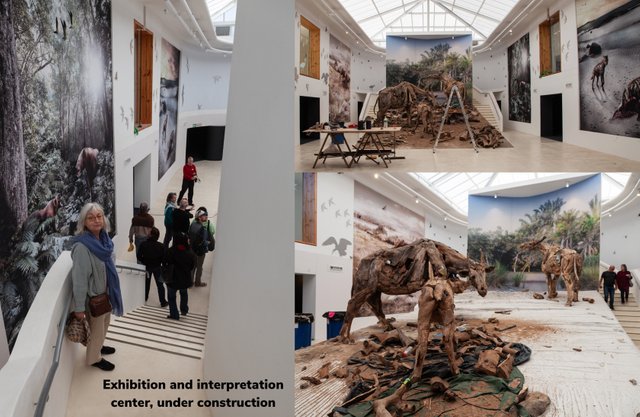
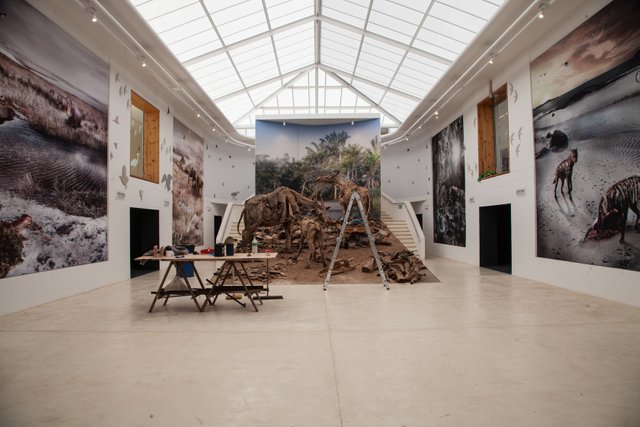
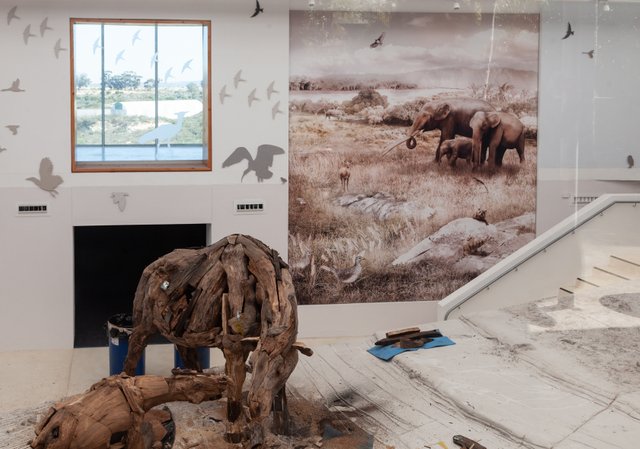
A trip worth undertaking
If you happen to be visiting Cape Town, you should take the opportunity to drive the one-and -a-half-hour journey to Langebaanweg to see this unique site where thousands of fossil animal bones were found. It is world-renowned for its exceptionally well-preserved fossil faunal remains that date to the terminal Miocene/early Pliocene geological period about 5.2 million years ago. Researchers come from all over the world to South Africa to work and interpret these collections that are currently housed at the Iziko South African Museum. They provide an important context for interpreting and dating similarly aged sites in other parts of Africa. Scientific research is currently unravelling the fascinating and unique history of fossils from the West Coast Fossil Park and is attempting to recreate the environment and climate of the west coast some 5 million years ago.
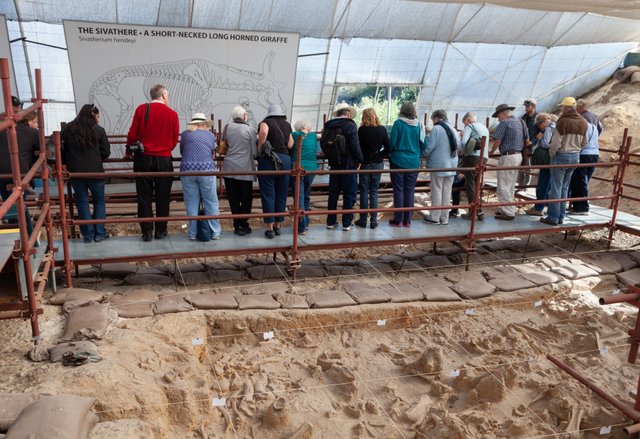
At that time many animals that are now extinct, such as saber-toothed cats, short-necked giraffes, hunting hyenas and African bears roamed the west coast which then had a more subtropical climate with thick riverine forests and open grasslands.
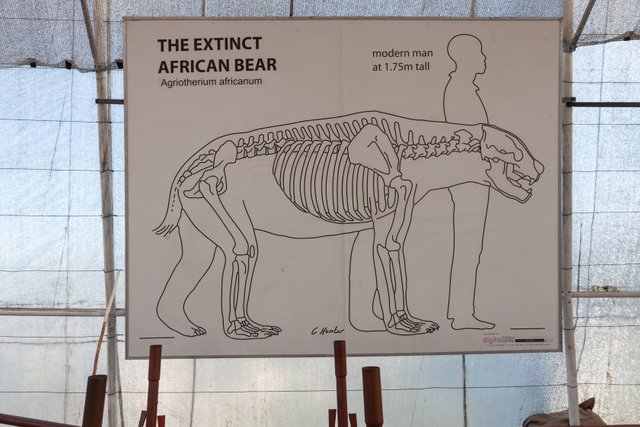
The Dig
At the Fossil Park you can see an actual dig site excavated by palaeontologists over the years with the fossilized bones in situ. Guided tours take place( see times below) at the dig site. Your guide will point out interesting features and will interpret what could have happened here. An experience not to be missed.
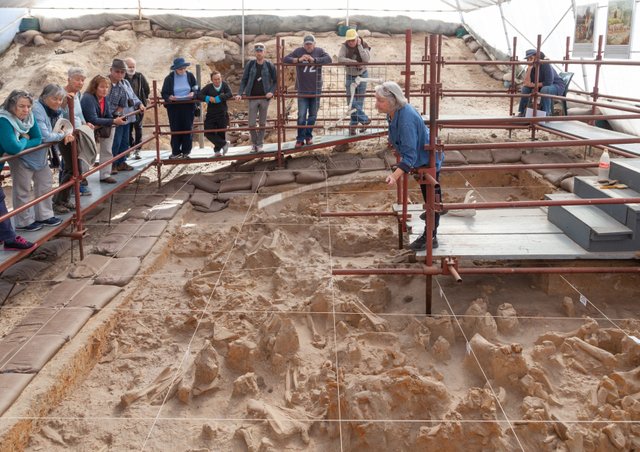
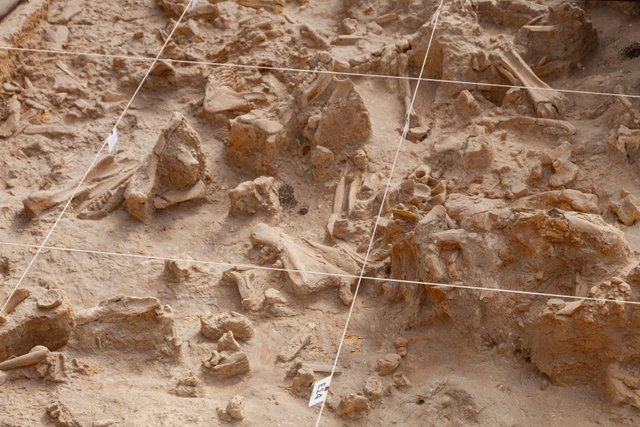
History of the finds.
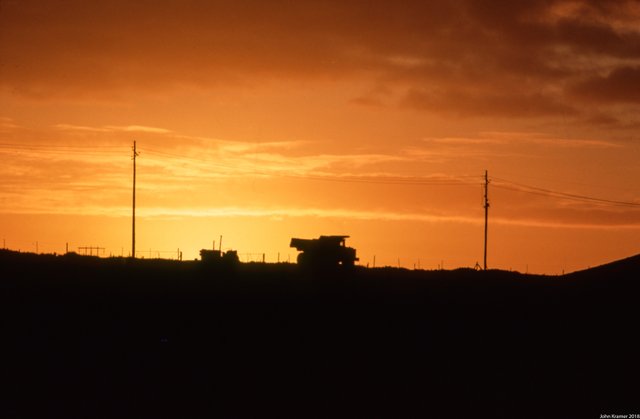
Fossils were first discovered in 1958 at Langebaanweg due to the mining operations by Chemphos for phosphate. After uncovering mountains of earth to get to the phosphate layer an employee of the mine notified Dr Ronald Singer from the University of Cape Town that he had a small collection of unusual phosphate bones that had been picked up in the mining area. Dr Singer accompanied by Dr Hooiijer from Leiden University and Dr Crompton, the director of the South African Museum set out for Langebaanweg and were shown what were later identified as an ankle bone of an extinct short-necked giraffe and a tooth of an extinct elephant.
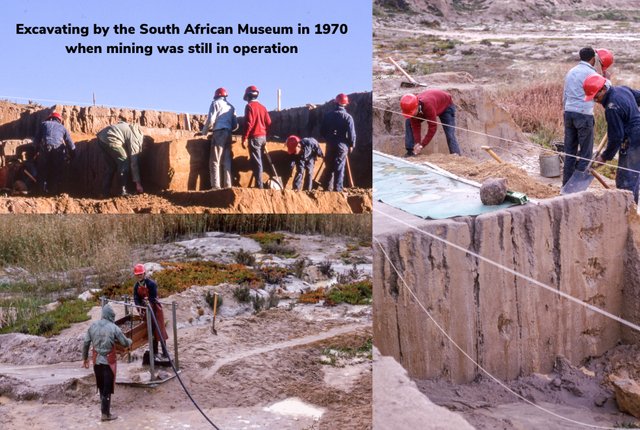
In the 1960’s and until the latter 1980’s the focus of research was conducted by the South African Museum under the leadership of Dr. Brett Hendey who published many scientific papers on all the discoveries that came to light during this period. A highlight was the discovery of an extinct African bear.
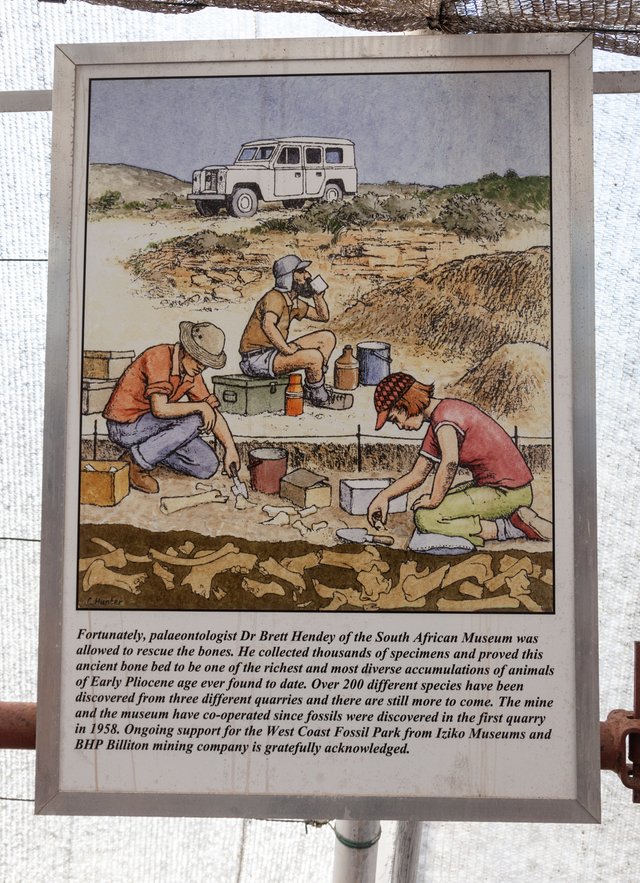
When Dr Hendey left the South African Museum to take up directorship of the Durban Museum in 1986 research at the fossil site all but ceased. When mining operations became uneconomical and the mine was closed in 1993, the future of this unique site was in the balance. By law the mine was obliged to backfill the excavation and rehabilitate the landscape.
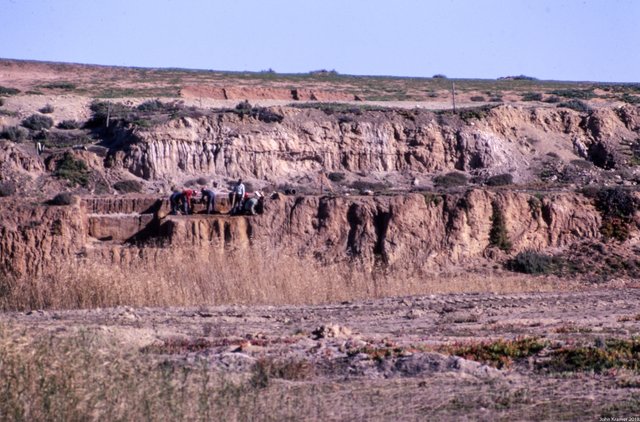
Only by the foresight of museum personnel who together with the then National Monuments Council managed to get the remaining fossil rich area within the mine property declared a National Monument Site in 1996 thereby securing this precious 14 hectre fossil rich area for posterity. Some money that would of been used to rehabilitate the mine was used to convert some buildings into a research and education centre. Excavations at the fossil park continued every year and at present a total of 80 square meters of the fossil bone bed is exposed and protected by a structure erected over the site. It is open for public viewing and a guide will explain the latest theories about the site. The vast 700 hectres of the entire mine area has now been declared a Provincial Heritage Site.
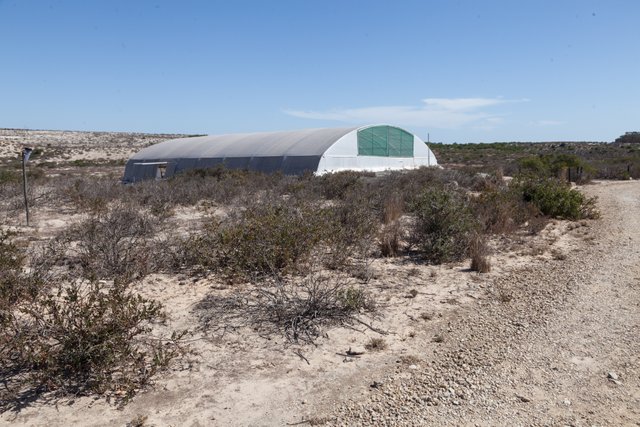
If you are planning a visit to the West Coast Fossil Park.
It is advisable to phone to confirm the tour times and to bring a hat or umbrella. Have good walking shoes. The tour to the dig site involves an easy 250 meter walk on a gravel/sand road.
Guided Tours to the Dig Site with in situ 5 million year old fossils
Duration: Approximately 45 minutes
Hourly tours on weekdays: 10:00, 11:00, 12:00, 13:00, 14:00 and 15:00.
Weekend and public holidays hourly tour times are as follows: 10:00, 11:00, 12:00 and 13:00.
Restaurant, Shop and Lecture Theatre
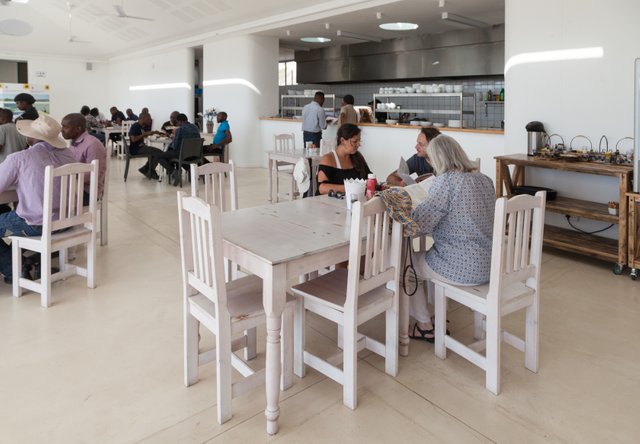
There is a restaurant that provides light meals, burgers and toasted sandwiches, carrot cake and lemon meringue. Specials of the day may include a variety of quiches and wraps. You may also browse the gift shop where you will find some interesting local crafts and books.
Awesome post @capelight! Very interesting story about he history of the park, and so good to see the upgrades being done. That's going to be a really nice stop on a trip around the Cape for sure.
Downvoting a post can decrease pending rewards and make it less visible. Common reasons:
Submit
Interesting information thank you, have never heard about this fossil park, Africa is a rich source of information from the past.
Recently learned about the Red Desert when visiting Port Edward recently, unfortunately never got to visit and see. For more: https://www.geocaching.com/geocache/GC4EGAM_the-mystery-of-the-red-desert-port-edward?guid=fa1d7d63-28ff-4461-bc0b-28b9b001fb6c
Downvoting a post can decrease pending rewards and make it less visible. Common reasons:
Submit
Worth a visit, go after September.
Downvoting a post can decrease pending rewards and make it less visible. Common reasons:
Submit
Will visit the very next time that we are down there! Thank you for a great and very informative post! I never knew Africa had its own bear! Blessings and upvoted!
Downvoting a post can decrease pending rewards and make it less visible. Common reasons:
Submit
Cheers!!
Downvoting a post can decrease pending rewards and make it less visible. Common reasons:
Submit
Congratulations, Your Post Has Been Added To The Steemit Worldmap!
Author link: http://steemitworldmap.com?author=capelight
Post link: http://steemitworldmap.com?post=the-west-coast-fossil-park
Want to have your post on the map too?
Downvoting a post can decrease pending rewards and make it less visible. Common reasons:
Submit
Oh wow, the new setup looks great! Very different from the dull appearance it had previously. Still loved the trip though :)
Downvoting a post can decrease pending rewards and make it less visible. Common reasons:
Submit